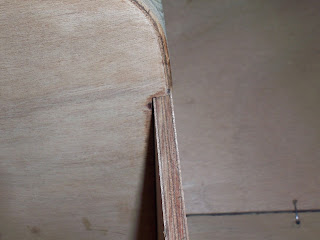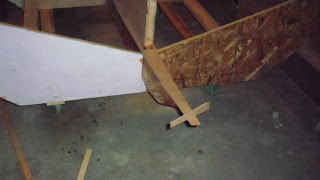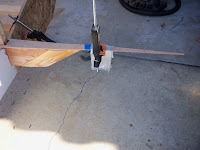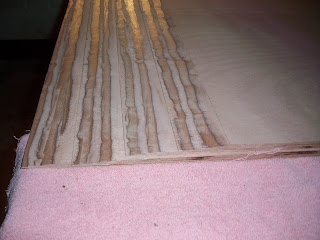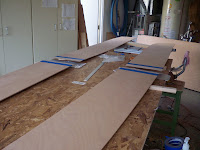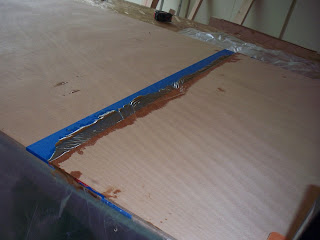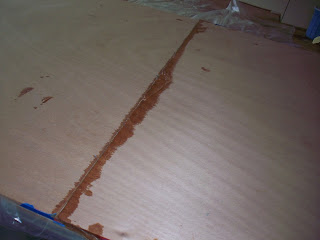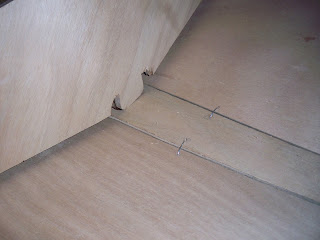
That was 3 days ago and I kept walking by it, while doing other tasks, and wondering where I could have measured wrong. I have been so careful transferring the plans to the wood. I was busy with other tasks so I didn't need to allot much thought to that problem. But as I draw closer to its installation I have begun to ponder how to remedy this problem. Do I need to trim the top edge? Cut a bit off the tab at the bottom?
Then the light bulb came on. The little tab at the bottom center of Floor 4 is supposed to fit in the opening between the trunk and the keelson. Here I thought that space was either bad measuring on my part or (bite my tongue) designed as so. During keelson installation there is no mention that the square opening cut in the keelson, to slip over the trunk, is cut longer than the trunk for a reason. When installed correctly the opening will be snugged up to the aft end of the trunk leaving a gap of about 6 mm(I should have been suspicious) at the for end of the trunk. Just enough space into which that tab on Floor 4 can fit. Duh!!!
I had left, only by pure luck, a gap of about 4 mm. So I decided to shave a bit of the tab so it would fit in the gap mortise and tenon-like.
I used my Japanese Pull Saw to trim the tab and momentarily felt like a fine craftsman until I cut my finger.
It's a bit difficult to see but the tab slid nicely into the slot and the top edge fit snugly under the chin of wood on the curved corner of the trunk.
It felt good to solve a problem which 3 days ago was just a big question mark.
I'm currently glassing the inside surface of the sides to prepare to install them to the hull panels. It's not easy finding room in my small garage for these two 15' panels. I have to do a mild limbo to move in certain areas of the ngarage. Progress is a bit slow because it's been staying well below 60 F. in the evenings so I can only use epoxy on the weekends when it's a bit warmer. I should clarify that it is not warmer here on weekends. On weekends I can work when the sun is out and > 60 degrees.
I've yet to pull the bow edge of the hull together yet. That may take a little more problem solving. If I need to wet the last 24" inches as suggested in the manual I'm not sure how something like that is accomplished.


